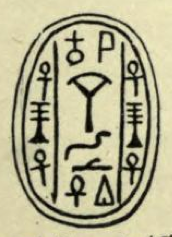| Wazad | |
|---|---|
| Uazed, Wadjed, Wasa, Uatched | |
 Scarab of pharaoh Wazad, drawing by Flinders Petrie. [2] | |
| Pharaoh | |
| Reign | c. 1700 BC, possibly 3–4 years (Ryholt) |
| Dynasty | 14th dynasty |
Wazad was an Egyptian pharaoh during the Second Intermediate Period. According to the Egyptologists Kim Ryholt and Darrell Baker, Wazad was a member of the 14th Dynasty of Egypt reigning c. 1700 BC. [3] As a king of the 14th Dynasty, he would have reigned from Avaris over the eastern Nile Delta and possibly over the western Delta as well. [3] The Memphis-based 13th Dynasty reigned over Middle and Upper Egypt at the same time. Alternatively, according to Jürgen von Beckerath and Wolfgang Helck, Wazad was a ruler of the 16th Dynasty and a vassal of the Hyksos 15th Dynasty. [4] This view is debated in Egyptology, in particular because Ryholt and others have argued that the 16th Dynasty was an independent Theban kingdom rather than a vassal dynasty of the Hyksos.